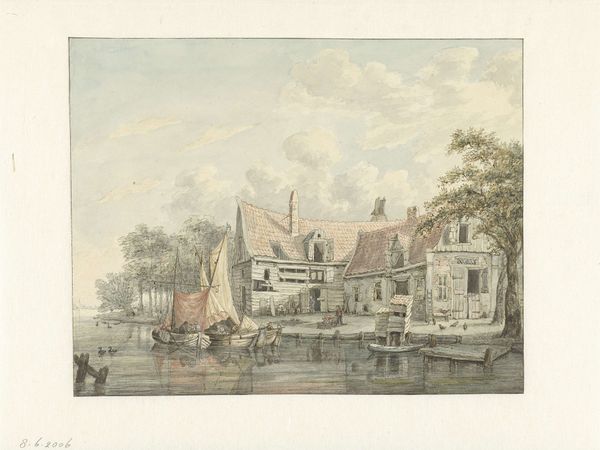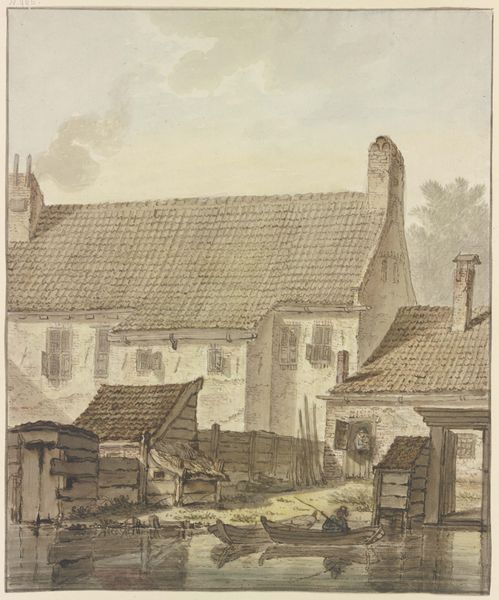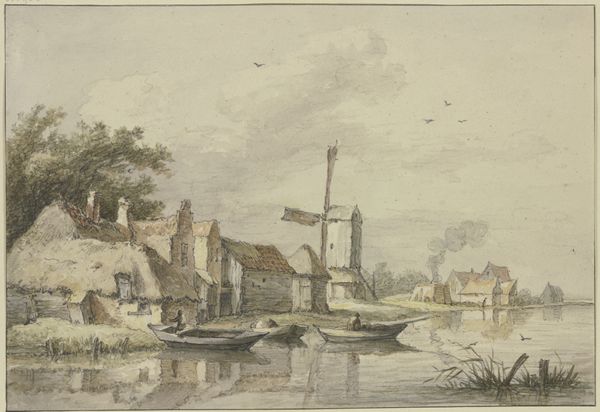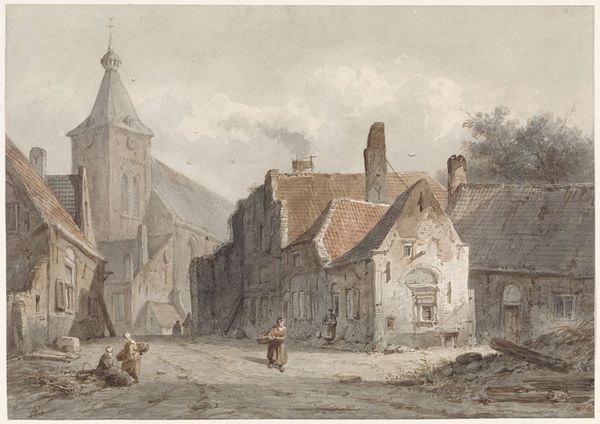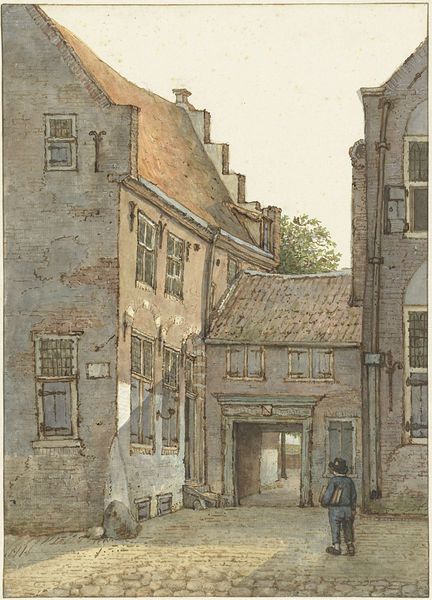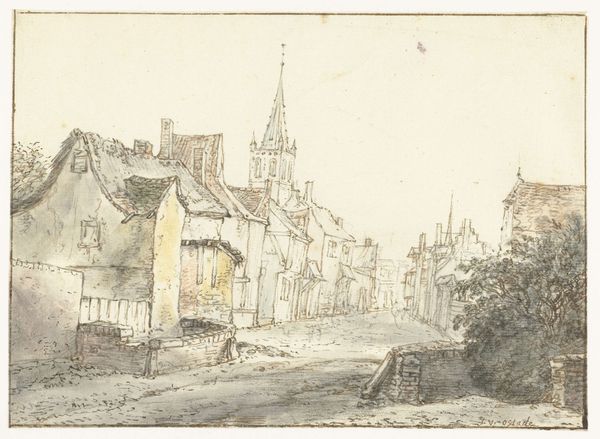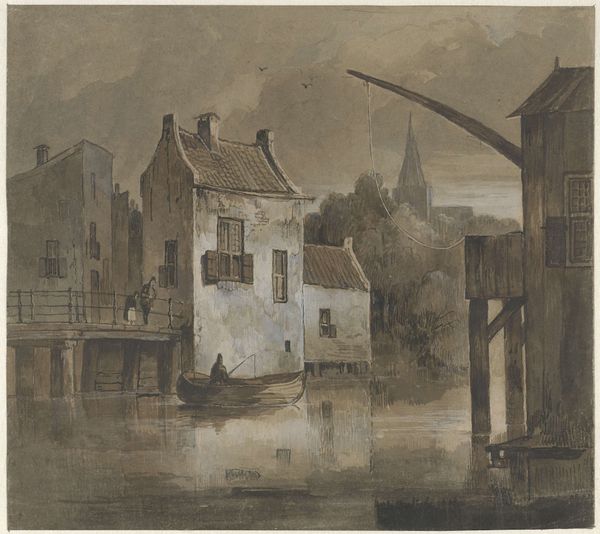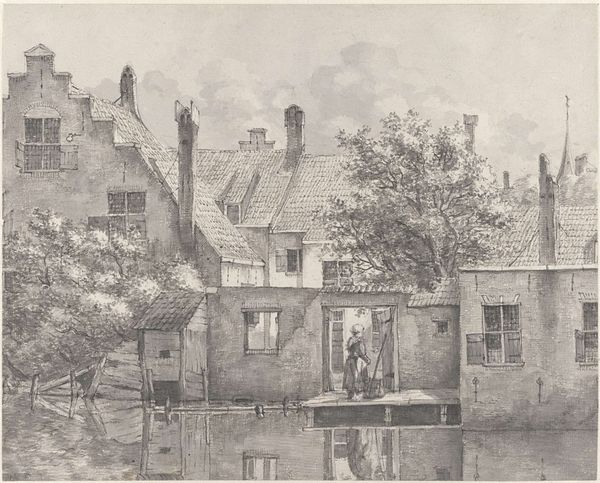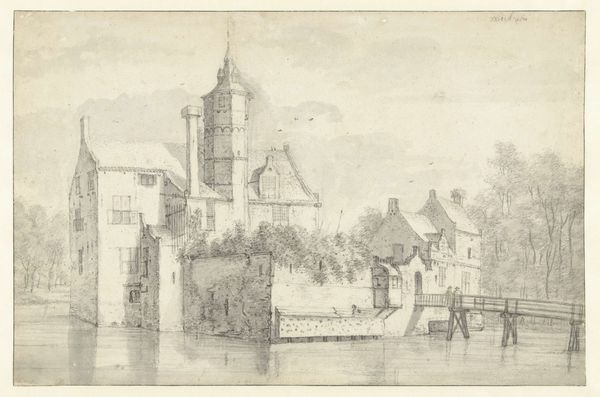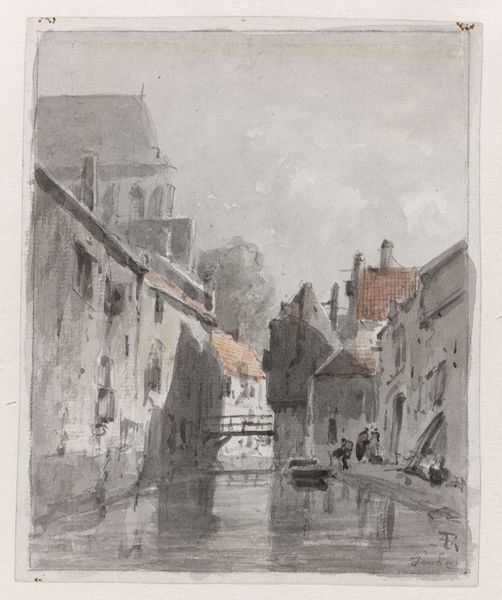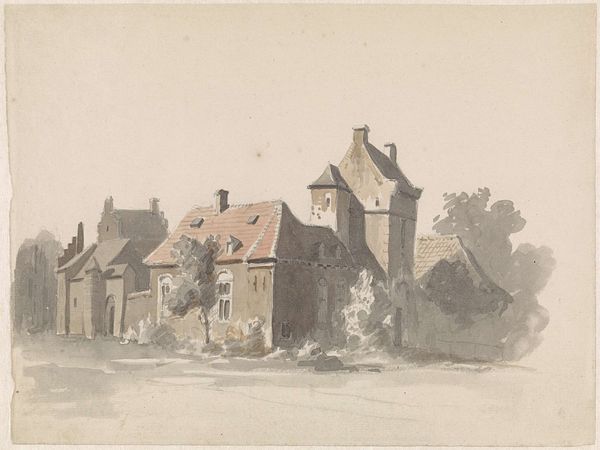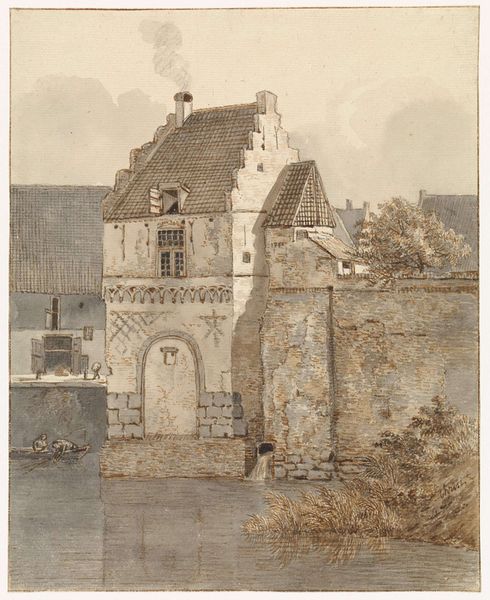
watercolor
#
dutch-golden-age
#
landscape
#
watercolor
#
coloured pencil
#
cityscape
#
genre-painting
#
mixed media
#
watercolor
Dimensions: height 262 mm, width 221 mm
Copyright: Rijks Museum: Open Domain
Curator: Before us hangs Jan Hulswit’s "Dilapidated Houses on the Water," a watercolor from approximately 1776 to 1822. The delicacy is quite striking. Editor: Indeed. The light itself feels delicate, almost melancholic, particularly as it catches on the decaying wood. Curator: The structure of the buildings is compelling—observe how the artist juxtaposes the verticality of the large building on the right with the more horizontal lines of the canal and smaller structures to the left, creating a measured visual balance. Editor: But that decay! It speaks volumes about labor, about the people who built and lived in these structures, the slow wearing-down that neglect and time bring. It is anything but idealised! Consider, too, the evidence of work in the scene—lumber piled against the building. Curator: Semiotically, that decay signifies more than mere deterioration. Note the reflections in the water. It's almost a mirror to the inevitability of decline, an inherent part of the structure and its representation. Editor: Exactly. Think about the material reality. These aren't just houses; they are testaments to the materials—the wood, the brick—and the forces that have shaped them, the consumption, and, finally, the disuse. Watercolor, mixed with the artist's own material choices in depicting this truth. Curator: But consider Hulswit's subtle color palette; it unifies the composition, despite the contrasts in architectural styles and conditions, elevating the quotidian to something of greater significance. Editor: I see something beyond elevating: recording. This is the materiality of everyday life for many. We get an unvarnished depiction that privileges the labour that allowed these homes and society to function. This image offers an important connection between craft, production, and the art historical canon. Curator: Ultimately, whether a social document or aesthetic statement, it holds a certain visual integrity. Editor: It does. To analyze its content reveals a web of complex interactions, from artist to medium, labor, and historical context.
Comments
No comments
Be the first to comment and join the conversation on the ultimate creative platform.
